Retro Replay Review
Gameplay
The Bulge: Battle for Antwerp offers a semi-realtime wargame experience built around 15-minute time ticks. Each turn flows continuously until midnight, at which point the clock jumps forward to 7:00 AM the following day. This system creates a sense of urgency during critical phases of the Ardennes Offensive while still allowing strategic pauses. The inclusion of a pause command lets players freeze the action, review orders, and plan with meticulous care—an essential feature when juggling multiple fronts or anticipating sudden German counterattacks.
(HEY YOU!! We hope you enjoy! We try not to run ads. So basically, this is a very expensive hobby running this site. Please consider joining us for updates, forums, and more. Network w/ us to make some cash or friends while retro gaming, and you can win some free retro games for posting. Okay, carry on 👍)
Units appear on the map as distinctive icons, each representing a regiment, brigade, or division with its own strength value. At the launch of the scenario, forces are positioned according to their historical December 16, 1944 placements, immediately immersing players in the tension of the initial German assault. To issue orders, you simply select a unit icon and click on a target hex. Whether you’re directing an infantry regiment toward Bastogne or scrambling armored divisions to plug gaps, formations automatically navigate terrain and engage enemies as they encounter them.
As the battle unfolds, reinforcements arrive at historically accurate drop-in points, shifting momentum on both sides. Combat continues until units are completely wiped out, at which point a ticker at the top of the screen notifies you of each loss. This same ticker keeps you up to date with weather reports, incoming air support, and critical reinforcements—ensuring that you never lose track of the dynamic ebb and flow of the Ardennes fighting spree.
Victory hinges on accumulating points by capturing strategic cities and eliminating enemy formations. Each town carries a specific point value, while destroying regiments, brigades, and divisions further tilts the score in your favor. The German campaign introduces special conditions—such as the requirement to take Spa before its fuel depot is destroyed—adding an extra layer of period-authentic challenge. Failure to meet these objectives can degrade your combat effectiveness, pressing you to balance aggression with historical precision.
The scenario concludes on January 3, 1945, at which time final point tallies are displayed along with victory declarations for each side. Before exiting, you can review the endgame map, analyze unit dispositions, and immediately jump into a new playthrough. This tight loop of action, feedback, and replayability makes The Bulge: Battle for Antwerp a gripping exercise in operational command.
Graphics
Visually, The Bulge: Battle for Antwerp sports a functional, grid-based map that emphasizes clarity over flashy aesthetics. Hex outlines, terrain icons, and road networks are all laid out in muted earth tones, evoking the snow-clogged forests and rolling hills of the Ardennes. Although the graphics show their age by modern standards, the distinct unit counters and terrain symbols remain unmistakable, allowing veteran wargamers to quickly interpret the battlefield at a glance.
Unit strength bars and color-coded national insignias help you differentiate between American, British, and German formations. While you won’t find polygonal 3D models or zoomable satellite imagery, the minimalist art style serves its purpose: it places your strategic decisions front and center. The UI panels and tickers along the top and bottom of the screen deliver text updates and reports in a straightforward, no-nonsense format that veteran simulation fans will appreciate.
Weather animations and simple iconography for air support, supply status, and reinforcements add layers of immersion without cluttering the screen. Watching snowflake icons appear alongside a brief weather alert pulls you deeper into the historical setting. Likewise, the ticker’s announcement of inbound fighter-bomber squadrons or fresh German Panzers conveys real-time developments in a compact, readable style.
Story
While The Bulge: Battle for Antwerp isn’t a narrative-driven affair in the style of a modern single-player campaign, its foundation in historical authenticity gives it a compelling storyline. You relive the surprise German offensive of December 16, 1944, complete with the desperate American stand at Bastogne and the critical race to secure Antwerp’s supply lines. Every turn feels like a chapter in one of World War II’s most famous engagements.
Historical reinforcements and special conditions—such as the German urgency to seize Spa’s fuel depot—underscore the logistical drama behind the fighting. Weather reports can cut air support, muddy roads, and slow armored thrusts, mirroring the real-world challenges faced by commanders on both sides. The game’s events ticker often reads like a wartime communique, reinforcing the sense that you are making operational decisions under the pressures of war.
Between the opening hour-by-hour scramble of the Ardennes push and the climactic end on January 3, 1945, players witness the ebb and flow of victory and defeat. No scripted cut-scenes are necessary; the slow accumulation of victory points by capturing villages and destroying units writes its own history. Each playthrough forges its own unique storyline, shaped by your decisions and the fortunes of war.
Overall Experience
The Bulge: Battle for Antwerp excels as a niche simulation that rewards patience and strategic foresight. Its semi-realtime clock, historical reinforcements, and point-based victory conditions combine into a tightly woven experience that pulls you into the operational challenges of the Ardennes Offensive. You won’t find cinematic flair or hand-holding tutorials, but if you relish the meticulous planning and shifting dynamics of a true wargame, this title delivers.
Accessibility is straightforward: a minimalistic interface, clear unit counters, and on-screen tickers ensure you’re never overwhelmed by micromanagement. The pause function gives you breathing room to assess large-scale maneuvers or manage simultaneous engagements. At the same time, the lack of modern graphical bells and whistles keeps hardware requirements low and the focus firmly on decision-making.
Replay value runs high, as you can take command of either the Allied or German forces and experiment with alternate strategies. Tweaking your timing on reinforcements, redirecting armored pincers, or prioritizing different objectives yields fresh tactical puzzles with each new playthrough. For history buffs and dedicated wargamers, The Bulge: Battle for Antwerp stands as an absorbing digital reenactment of one of World War II’s most dramatic battles.
In summary, this simulation strikes a rewarding balance between historical authenticity and player agency. Its clear presentation, robust gameplay systems, and evocative setting make it a standout choice for those seeking an in-depth command experience. While it may lack the flash of modern engines, its commitment to operational accuracy ensures that every decision carries weight—and every victory feels hard-won.
 Retro Replay Retro Replay gaming reviews, news, emulation, geek stuff and more!
Retro Replay Retro Replay gaming reviews, news, emulation, geek stuff and more!

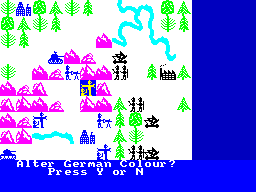
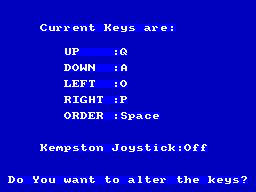
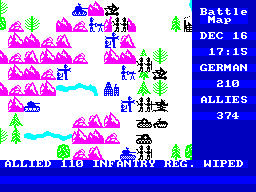
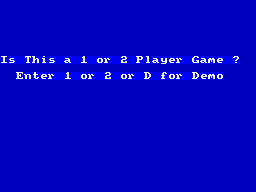
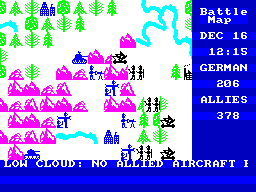



Reviews
There are no reviews yet.